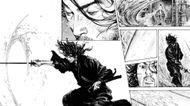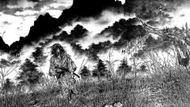When manga fans speak of the greatest series of all time, Vagabond is never far from the discussion. Its gorgeous brushwork, philosophical undercurrents, and emotionally raw characters have elevated it to near-mythical status within the manga community. And yet, the greatest question that continues to haunt its legacy isn't about its themes or artistry; it's the fact that Vagabond remains unfinished.
It’s a fate shared by legendary series like Hunter x Hunter or Berserk. However, this series stands apart because of one crucial difference: its author is still alive, active, and producing other content. So why hasn’t Vagabond returned? The answer to this question is not as simple. To understand the true reason behind it, we must talk about the mangaka.
The creator of this story once came across a historical novel by Eiji Yoshikawa based on the life of the real samurai Miyamoto Musashi. After reading his story, he was so moved by it that he had to tell Musashi’s story.

Thus, Vagabond began serialization in 1998 in Morning, a seinen manga magazine. From the outset, it stood out for its realism, mature storytelling, and stunning artwork, which would later transition into brush painting, giving the manga a unique aesthetic unmatched by most series in the medium.
But soon his most ambitious project started to drain him. Inoue admitted it in a candid interview with Mangabrog.
“I was stuck doing the work for external factors… I'd forgotten to look inside myself.”
This manga was no longer just a story he was passionate about. It had become a towering responsibility, one he felt he could no longer carry with joy. Unlike REAL, his other manga about wheelchair basketball, Vagabond required intense emotional and creative labor.
The farming arc and fan reception

The last major completed arc of Vagabond focuses on Musashi living a peaceful life in a rural village, helping farmers cultivate their land. Gone were the duels and sword fights. In their place were crops, irrigation systems, and philosophical reflection.
To many, this arc dragged and lacked the drama of earlier volumes. However, those who looked deeper found profound meaning in it — it was a symbolic rebirth of Musashi, who finally began to question the value of violence and fame. It’s this transition that this story was always building toward.
Still, the slow pace and change in tone caused a dip in popularity. Some theorize this, combined with Inoue’s declining energy, convinced him to put the series on the shelf, not out of anger, but out of exhaustion.
Can Vagabond make a comeback?

Inoue reaffirmed to the fans of this series that he intends to return to Vagabond one day. It is also possible that Inoue wants to end this story differently than expected and perhaps more abstractly or reflectively than a final duel with Sasaki Kojiro. Or maybe he’s waiting for a moment when he can draw with joy again. Until that time comes, this story remains a masterpiece in stasis.
Final thoughts
It’s easy for fans to say, “Just finish the manga already.” But we forget that behind every panel and line is a human being. Inoue is an artist who has given more of himself than most ever will. He’s bared his soul in the pages of Vagabond and bled his heart into every brushstroke.
To him, this manga series is not a product; it’s a mirror of his soul, and continuing it without passion would feel like betrayal. As fans, we should not pressure Inoue. We should instead thank him for the journey he gave us, the questions he posed, the art he created, and the love he poured into every chapter.
